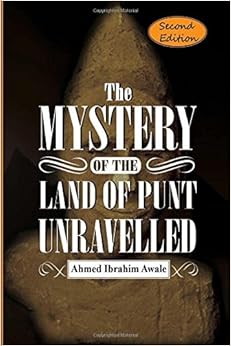The Mystery of the Land of Punt Unravelled is a fascinating book written by Ahmed Ibrahim Awale. He is a Somali scholar who led archaeological excavations in 2013 in Gol Waraabe, a valley in the northern Somali territories, where he and his team unearthed the first actual artifacts belonging to the ancient Land of Punt. Based on these finds and their close similarity with artifacts from ancient Egypt, Ibrahim hypothesizes that the ancient Egyptian culture (predynastic and dynastic alike) may have evolved from Puntite prototypes.
The first edition of the book appears to be out-of-stock in many online retailers. However, a new second edition is now available for roughly the same price (a little over $10 USD). It contains more than 40 additional pages worth of new material.
The author begins by giving a brief but informative summary of the various scholarly theories on where the ancient Land of Punt was located. What’s great is that he takes into account the recent isotopic work in Eritrea as well. He then presents his hypothesis that the kingdom was situated in the Horn region, with its center in the Somali territories in particular. The rest of the book is devoted to proving that theory through both his own archaeological excavations and by pointing out similarities in culture, physiognomy, language, mythology and rock art.
Below are some of the excavated Puntite artifacts. Notice the commonalities between the Puntite statuette in the book’s Figure 6 and the ancient Egyptian Pharaoh Tutankhamun’s coffin in Figure 7. They include a similar headdress, oval face shape and narrow facial features, Puntite beard (Osirid beard), cobra and vulture headdress emblems, and crook and flail across the chest symbolism:
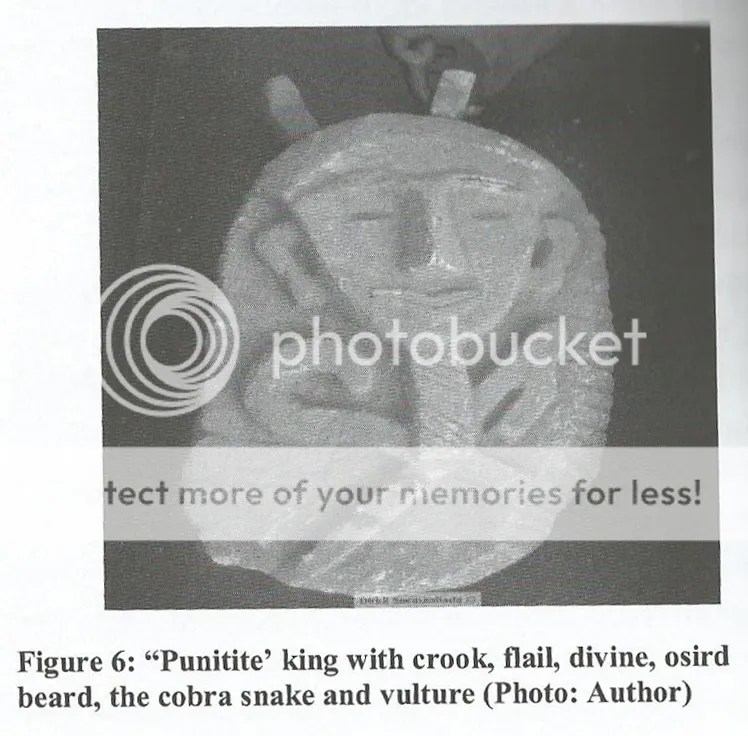
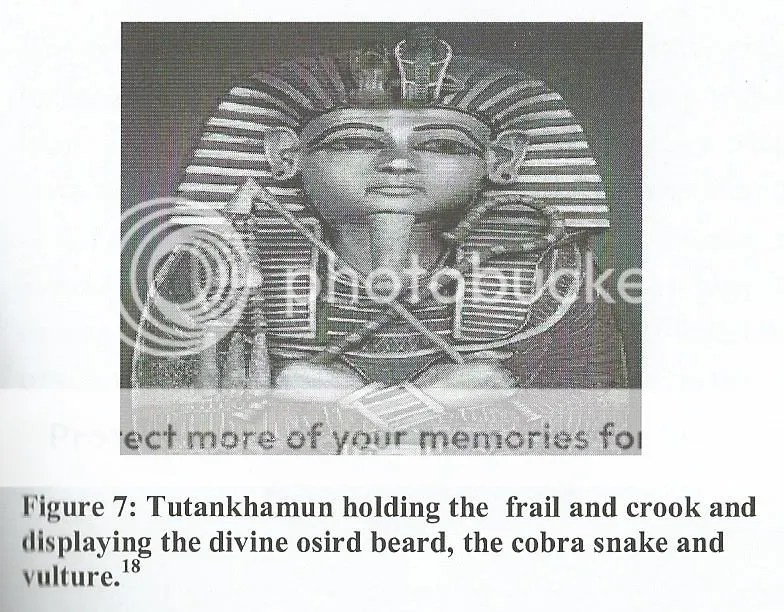
Another Puntite statuette wearing the royal headdress with the cobra and vulture emblems, and possessing the standard oval face shape and narrow facial features; he also has the Puntite/Osirid beard:
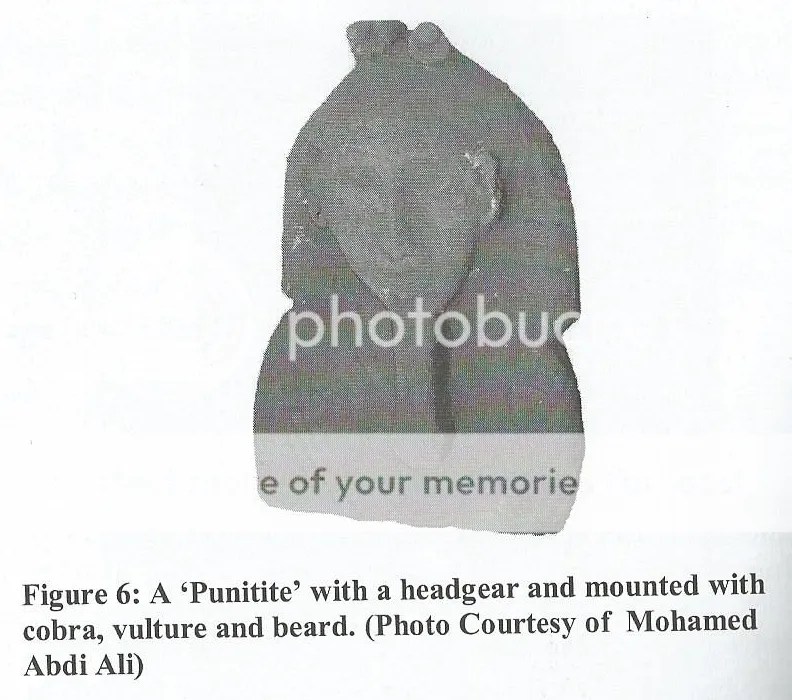

These statuettes also resemble full-size shabti/shawabti, which are funerary figures that the ancient Egyptians and related early Afro-Asiatic groups in the Sudan area would often carve for the dead.
An Egyptian Faience Shabti for Ankh-Netcher-Hapy, Late Period, Dynasty XXVI (664-525 BCE):
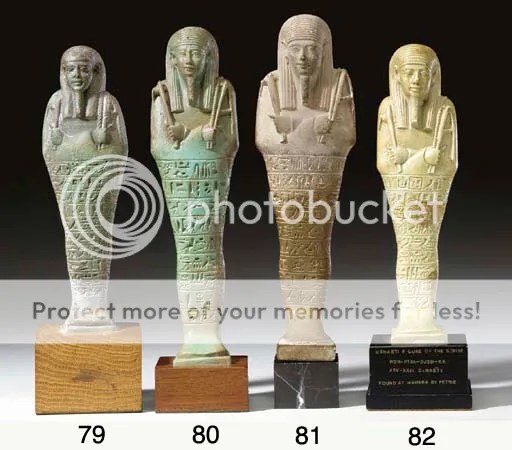
Interestingly, among the excavated Puntite artifacts were several statuettes with elongated heads. This too is consistent with ancient Egyptian tradition, wherein the custom of artificial cranial deformation was practiced by some Pharaohs and royal officials:
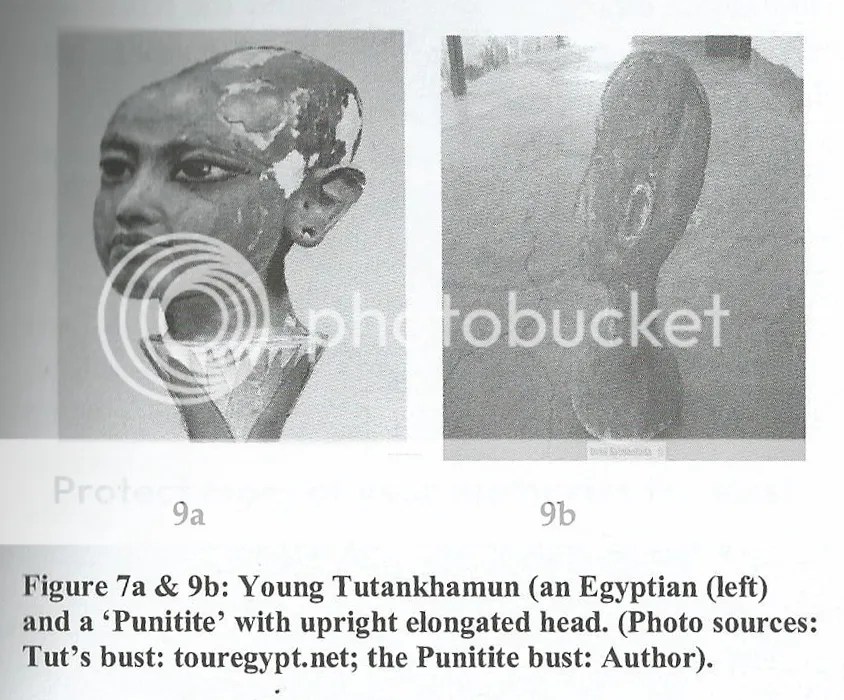
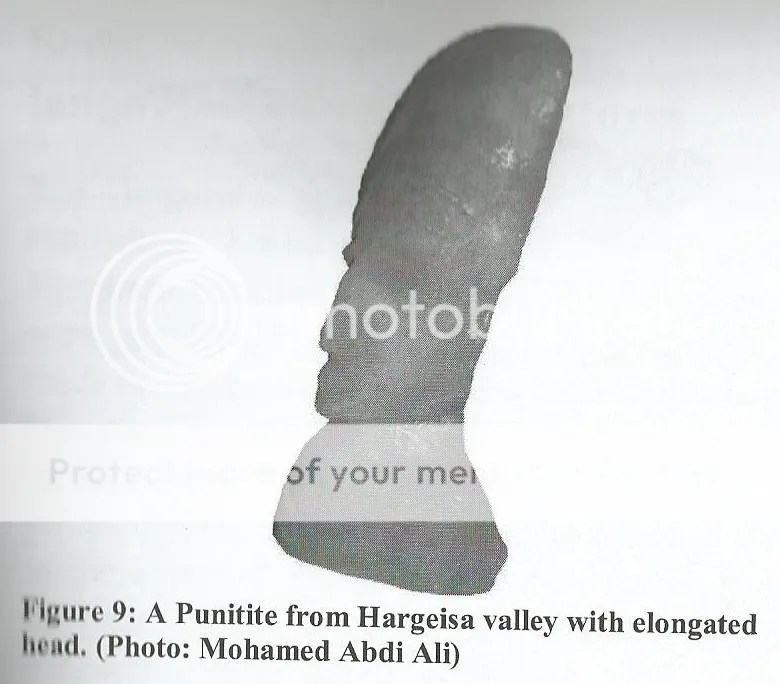
Some of the excavated Puntite statuettes also bear similarities with ancient Egyptian religious figurines. For example, the Puntite artifact in Figure 11 and the ancient Egyptian bronze oil lamp in Figure 10, which both appear to have been made in honor of the crocodile deity Sobek:
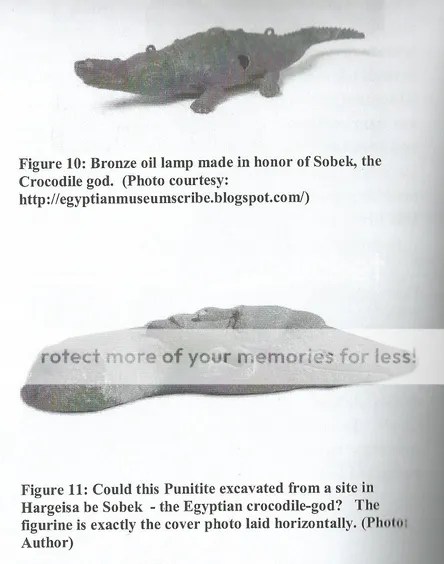
The Puntite statuette in Figure 11 is actually the same one as on the cover, albeit shown in profile:
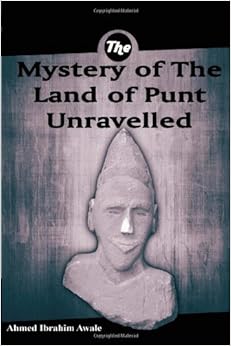
Furthermore, the lead archaeologist suggests that the Neolithic rock art at Laas Geel and elsewhere in the northwest and northeast Somali territories often depicts worshippers honoring the ancient Egyptian deity Hathor:
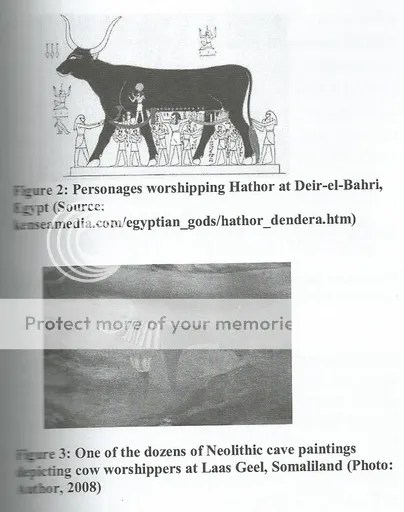
Note that the Puntite figures themselves are much bigger than this; the heads are actually larger than life-size. Besides these statuettes (which include several others alongside the ones above), the archaeologists also excavated some stone bowls, among other artifacts. This too is rather interesting since there happens to be an early Cushitic culture called the Savanna Pastoral Neolithic or Stone Bowl Culture, which is characterized by similar stone bowls.
Overall, thanks to the newly excavated Puntite artifacts, the book succeeds in establishing the Horn region as the most likely location of the mysterious Land of Punt. It is easily the most important work yet to be published on the ancient territory.
The first edition of the book appears to be out-of-stock in many online retailers. However, a new second edition is now available for roughly the same price (a little over $10 USD). It contains more than 40 additional pages worth of new material.
The author begins by giving a brief but informative summary of the various scholarly theories on where the ancient Land of Punt was located. What’s great is that he takes into account the recent isotopic work in Eritrea as well. He then presents his hypothesis that the kingdom was situated in the Horn region, with its center in the Somali territories in particular. The rest of the book is devoted to proving that theory through both his own archaeological excavations and by pointing out similarities in culture, physiognomy, language, mythology and rock art.
Below are some of the excavated Puntite artifacts. Notice the commonalities between the Puntite statuette in the book’s Figure 6 and the ancient Egyptian Pharaoh Tutankhamun’s coffin in Figure 7. They include a similar headdress, oval face shape and narrow facial features, Puntite beard (Osirid beard), cobra and vulture headdress emblems, and crook and flail across the chest symbolism:


Another Puntite statuette wearing the royal headdress with the cobra and vulture emblems, and possessing the standard oval face shape and narrow facial features; he also has the Puntite/Osirid beard:


These statuettes also resemble full-size shabti/shawabti, which are funerary figures that the ancient Egyptians and related early Afro-Asiatic groups in the Sudan area would often carve for the dead.
An Egyptian Faience Shabti for Ankh-Netcher-Hapy, Late Period, Dynasty XXVI (664-525 BCE):

Interestingly, among the excavated Puntite artifacts were several statuettes with elongated heads. This too is consistent with ancient Egyptian tradition, wherein the custom of artificial cranial deformation was practiced by some Pharaohs and royal officials:


Some of the excavated Puntite statuettes also bear similarities with ancient Egyptian religious figurines. For example, the Puntite artifact in Figure 11 and the ancient Egyptian bronze oil lamp in Figure 10, which both appear to have been made in honor of the crocodile deity Sobek:

The Puntite statuette in Figure 11 is actually the same one as on the cover, albeit shown in profile:

Furthermore, the lead archaeologist suggests that the Neolithic rock art at Laas Geel and elsewhere in the northwest and northeast Somali territories often depicts worshippers honoring the ancient Egyptian deity Hathor:

Overall, thanks to the newly excavated Puntite artifacts, the book succeeds in establishing the Horn region as the most likely location of the mysterious Land of Punt. It is easily the most important work yet to be published on the ancient territory.


